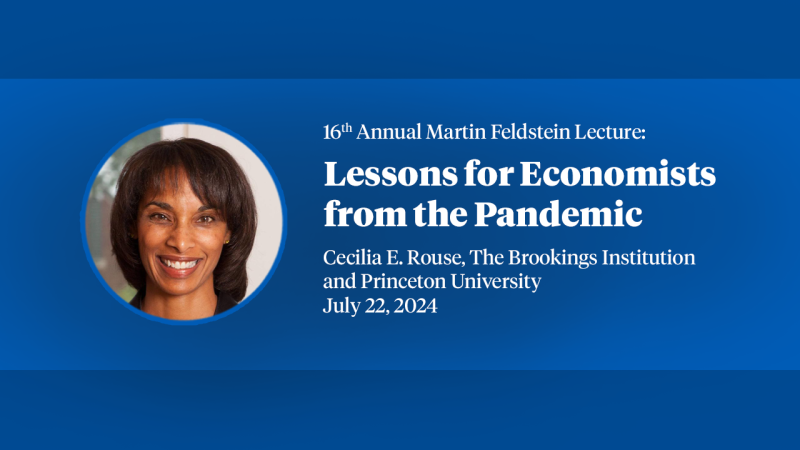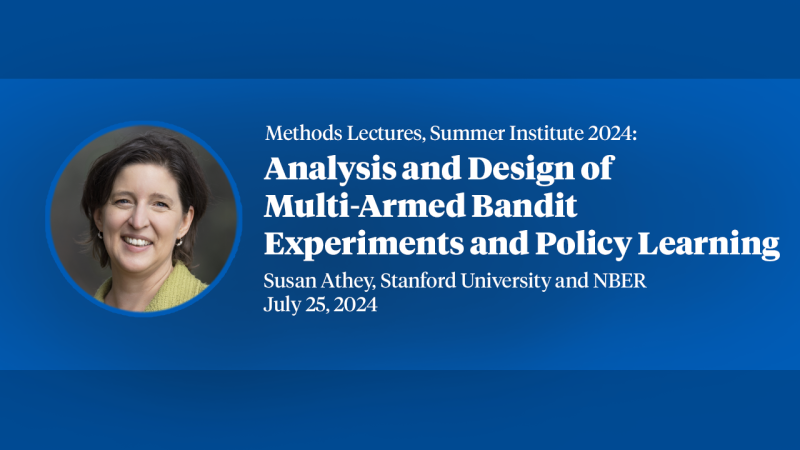Exchange Rate Regimes, Globalization, Financial Crises, and Monetary Policy
My research in the past decade has concentrated largely on four related themes that I discuss in this article: Exchange Rate Regimes; Globalization; Financial Crises; and Monetary Policy.
Exchange Rate Regimes
As discussed in the Fall 1999 NBER Reporter, much of my earlier work focused on the gold standard and related monetary regimes. A series of papers with Finn Kydland, Ronald MacDonald, and Hugh Rockoff emphasized the importance of credible commitment mechanisms in the design of monetary regimes, focusing on the gold standard.(1) My recent work extends this approach.
The choice of exchange rate regimes, between fixed and floating exchange rates, evolved considerably in the past hundred years.(2) Before 1914, advanced countries adhered to gold while periphery countries either emulated the advanced countries or floated. Some peripheral countries were especially vulnerable to financial crises and debt default, in large part because of their extensive external debt obligations denominated in core country currencies. This left them with the difficult choice of floating but restricting external borrowing or devoting considerable resources to maintaining an extra hard peg.
Today while advanced countries can successfully float, emergers who are less financially mature and must borrow abroad in advanced country currencies are afraid to float, for the same reason as their nineteenth century forbearers were. To obtain access to foreign capital, they may need a hard peg to the core country currencies. In my paper with Marc Flandreau the key distinction between core and periphery countries, both then and now, is financial maturity, evidenced in the ability to issue international securities denominated in domestic currency(3) (or the absence of "original sin", a phrase coined by Eichengreen and Haussman (1999)(4)).
However, a case study by Chris Meissner, Angela Redish, and myself of the debt history of several former colonies of Great Britain (the United States, Canada, Australia, New Zealand, and South Africa), who had largely overcome the problem of original sin by the third quarter of the twentieth century, finds that sound fiscal institutions, high credibility of the monetary regimes, and good financial development are not sufficient to completely break free from original sin. Conversely, poor performance in these policy realms is not, for the most part, a necessary condition for Original Sin. The factor we emphasize for the common progress toward borrowing in domestic currencies across the five countries is the presence of shocks, such as wars, massive economic disruption, and the emergence of global markets. The differences in evolution between the United States and the Dominions we attribute to differences in size, the role of a key currency, which characterized the United States and not the others, and to me mbership in the British Empire. The importance of major shocks suggests that the establishment of a domestic bond market that mitigated these effects involved significant start-up costs, while the importance of scale suggests that network externalities and liquidity were pivotal in the emergence of overseas markets in domestic currency debt.(5)
The limiting case of a fixed exchange rate regime is a monetary union. My study of the history of monetary unions (MUs) with Lars Jonung(6) -- based on the examples of the United States, Germany, and Italy -- suggests that the success of MUs of the past has been intimately linked with both fiscal and political unification. The implementation of EMU was largely driven by the political will of elites, and its ultimate success may also depend upon the political will of the citizenship.
Globalization
Globalization -- the integration of goods, labor, and capital markets -- has been one of the dominant issues in the past several decades. The present era of globalization was preceded by an earlier era in the late nineteenth century -from 1870 to World War I. Globalization in historical perspective was the subject of a recent NBER conference volume, edited with Alan Taylor and Jeffrey Williamson. The articles in the book covered many aspects of the globalization experience, including the integration of markets, growth convergence, inequality, financial development, the transmission of shocks, and the political economy of the backlash in the interwar period that ended the first era of globalization.
My research with Barry Eichengreen and Douglas Irwin(7) focused on a comparison of the record of financial and commercial globalization in the two eras of globalization.(8) The empirical evidence we survey suggests that, while in some respects the financial integration of the pre1914 era remains unsurpassed, in other respects today's financial markets are even more closely integrated than those in the past. The difference today is that new information-generating-and-processing technologies have reduced the market-segmenting effects of asymmetric information. In consequence, the range of financial claims that are traded internationally has broadened. While in the past entities (governments, railroads, and mining companies) with tangible and therefore relatively transparent assets were predominant, now international investors transact freely in a much broader range of securities.
We also find that the commercial integration before World War I was more limited. Given that integration today is even more pervasive than a hundred years ago, it is surprising that trade tensions and financial instability have not been worse in recent years. Institutional innovations that have taken place in the past century, such as the evolution of sound monetary and fiscal policies, the establishment of the Bretton Woods Institutions, GATT and the WTO, may be part of the explanation.
Financial Crises and Financial Instability
The recent era of globalization has been characterized by a large number of financial crises, both currency and banking crises, especially in the emerging markets.(9) My research with Barry Eichengreen and others considers whether this is a new phenomenon. Using a database for 21 countries from 1880-1997, we compiled evidence on the incidence, duration, and costs of various types of crises across four exchange rate regimes.(10) Like the evidence on financial integration, ours came with a strong feeling of déjà vu. The incidence and duration of currency crises have increased since earlier eras of globalization, while those of banking crises are similar. The output losses of crises are quite similar across eras of globalization except for twin crises, which have been worse. Moreover, we find that crises seem to reflect both economic structure and bad policies. One possible determinant of crises in emerging countries is the presence of original sin.
My work with Chris Meissner finds, in both eras of globalization, an increased probability that emerging countries with original sin experienced debt, currency, and banking crises. Furthermore, crises were more likely to be a problem for middle-income emerging countries that were less financially developed. In the first era of globalization, countries like Italy, Portugal, Argentina and Brazil were more crisis-prone than Australia, Canada, Denmark, and Sweden.
Another part of this research program focuses on the transmission of financial crises.(11) Antu P. Murshid and I (2000)(12) present evidence from weekly data on sovereign bond prices and interest rates for episodes of financial turbulence from 1880 to 1997. We find little evidence for contagion, defined as an incidence in bilateral cross-market correlations, adjusted for heteroscedasticity. However, we do find evidence suggestive of transmission via fundamentals-based trade channels. A related paper (Bordo and Murshid, 2002)(13), using principal components analysis on monthly spreads on long-term bond yields, finds that financial market shocks were more globalized before 1914 than they are now.(14)
Financial crises represent an extreme form of financial instability. Michael Dueker, David C. Wheelock, and I (2000, 2002)(15) construct indexes of financial stability for the United States and the United Kingdom for 1790-1997. We find that aggregate price level and inflation shocks contributed to financial instability in the 1790-1933 and 1986-97 periods.
Finally, my research has examined the role of policy in preventing, managing, and resolving crises. Anna J. Schwartz and I (1998) examine the historical record over the past two centuries on international rescues. We contrast the experiences before 1973 of rescues of monetary authorities of advanced countries that were temporarily short of liquidity with the experience in the 1990s of bailouts of insolvent emerging countries. In a later paper, we assess the impact of IMF loans on the macro performance of the recipients.(16) A simple with-without comparison of countries receiving IMF assistance during crises in the period 1973-98, with countries in the same region not receiving assistance, suggests that the real performance of the former group was possibly worse than the latter. Similar results are obtained after adjusting for self-selection bias and counterfactual policies(17).
Monetary Policy
Economic history has long provided a useful laboratory for the practitioners of monetary policy. My research in the area has focused on deflation and monetary policy and asset prices.
Deflation in historical perspective
The return in the 1990s to an environment of low inflation has raised the specter in the United States of deflation and the collapse of prices such as occurred in the 1930s. My work with Angela Redish focuses on the deflationary experience of 1870-96 during the pre1914 classical gold standard period. That episode has resonance for today because the gold standard regime, anchored by a credible commitment to maintaining long-run price stability, conveys similarities to today's central bank commitment to low inflation, and in both eras globalization was present with major technology shocks. We use a structural VAR methodology to distinguish between good deflation, reflecting productivity- driven increases in aggregate supply, and bad deflation, driven by collapses in aggregate demand. Our findings for the United Kingdom and Germany are that deflation was primarily of the good variety; for the United States, these results generally prevail with the exception of a banking-panic-induced demand-driven deflation episode in the mid 1890s.(18) Andrew Filardo and I (2004)(19) generalized this finding to a panel of over twenty countries for the past two centuries. With the exception of the interwar period we find that deflation was generally benign.
Monetary Policy and Asset Prices
The link between monetary policy and asset price movements has been of perennial interest to policymakers. Should the monetary authorities intervene to offset an asset boom before it turns into a bubble that bursts, with severe consequences for the real economy? Olivier Jeanne and I (2002)(20) present some stylized facts on boom-bust dynamics in stock and property prices in twenty OECD countries in the past thirty years, as well as for the United States for the past 150 years. We find that asset booms turning into busts are infrequent events, but when they happen they are sometimes associated with considerable economic distress. We develop a theoretical framework that outlines the circumstances under which a central bank may consider following a pre-emptive policy to prevent the consequences of a bust.
Wheelock and I (2004)(21) examine the economic environment in which past U.S. stock market booms occurred as a first step toward understanding how these booms come about and whether monetary policy should be used to defuse them. In general, we find that booms in the past century and a half occurred in periods of rapid real growth and productivity advance, suggesting that booms are driven at least partly by fundamentals. We find no consistent relationship between inflation and stock market booms, though; booms have typically occurred when money and credit growth were above average.
1. M. D. Bordo and F. Kydland, "The Gold Standard as a Rule: An Essay in Exploration", Explorations in Economic History (1995); M. D. Bordo and H. Rockoff, "The Gold Standard as a `Good Housekeeping Seal of Approval'", Journal of Economic History (1996); and M.D.Bordo and R. MacDonald, "Violations of the 'Rules of the Game' and the Credibility of the Classical Gold Standard, 1880-1904", NBER Working Paper No. 6115, July 1997.
2. J. A. Frankel, "Experience of and Lessons from Exchange Rate Regime in Emerging Economies", NBER Working Paper No. 10032, October 2003. Also M. D. Bordo and H. James, "One World Money, Then and Now", NBER Working Paper No. 12189, May 2006, posits that in today's world of globalization and large shifts in relative prices, the Einsteinian or relative conception of money implicit in floating exchange rates is more suitable than the Newtonian view that underlies the case for fixed exchange rates.
3. M. D. Bordo and M. Flandreau, "Core Periphery, Exchange Rate Regimes, and Globalization" in Globalization in Historical Perspective, M. D. Bordo, A. Taylor, and J. Williamson, eds., Chicago: University of Chicago Press (2003); and M. D.Bordo, "Market Discipline and Financial Crisis Policy: An Historical Perspective", Research in Financial Services: Private and Public Policy, Vol. 18, (2004), pp 154-82.
4. B. Eichengreen and R. Haussman, "Exchange Rates and Financial Fragility", NBER Working Paper No. 7418, November 1999.
5. M. Flandreau and N. Sussman, "Old Sins: Exchange Rate Clauses and European Foreign Lending in the 19th Century", in Other People's Money: Debt Denomination and Financial Instability in Emerging Markets Economies, B. Eichengreen and R. Hausmann, eds., Chicago and London: University of Chicago Press (2005).
6. M. D. Bordo and L. Jonung, " The Future of EMU: What Does the History of Monetary Unions Tell Us?" NBER Working Paper No. 7365, September 1999. Also see M. D. Bordo, "The United States as a Monetary Union and the Euro: A Historical Perspective", Cato Journal, Vol. 24, No. 1-2, Spring/ Summer 2004, pp.163-70.
7. M. D. Bordo, B. Eichengreen, and J. Kim, "Was There Really an Earlier Period of International Financial", NBER Working Paper No. 6738, September 1998; and M. D. Bordo, B. Eichengreen, and D. Irwin, "Is Globalization Today Really Different than Globalization a Hundred Years Ago?" in Brookings Trade Policy Forum, S. Collins and R. Lawrence, eds, Brookings Institution, Washington, D.C. (1999).
8. Also see M. Obstfeld and A. Taylor, Global Capital Markets: Integration, Crisis, and Growth, Cambridge University Press, (2004).
9. In "Why Clashes Between Internal and External Stability Goals End in Currency Crises, 17971994," NBER Working Paper No. 5710, June 1997, Michael D. Bordo and Anna J. Schwartz present a narrative of the history of currency crises from 1797-1994, which reflects a clash between internal and external stability goals. In "Some Historical Evidence 18701933 on the Impact and International Transmission of Financial Crises", NBER Working Paper No. 1606, September 1986, Bordo examines some historical experience on banking crises.
10. M. D. Bordo and B. Eichengreen, "Crises Now and Then: What Lessons from the Last Era of Financial Globalization", NBER Working Paper No. 8716, January 2002; M. D. Bordo, B. Eichengreen, D.Klingebiel, and S.Martinez-Peria, "Is the Crisis Problem Growing More Severe?" Economic Policy, (2001); and M. D. Bordo and B. Eichengreen, "Is Our Current International Economic Environment Unusually Crisis Prone?" in International Financial System: Conference Proceedings, (1999), D. Gruen and L. Gower, eds., Reserve Bank of Australia, Sydney.
11. Earlier evidence on the transmission of banking crises is in M. D. Bordo, " Some Historical Evidence 18701933 on the Impact and Transmission of Financial Crises", NBER Working Paper No. 1606, September 1986, and M. D. Bordo, B. Mizrach, and A. J. Schwartz, "Real Versus Pseudo International Systemic Risk: Some Lessons From History", Review of Pacific Basin Financial Markets and Policies, (1998).
12. M. D. Bordo and A. P. Murshid, "Are Financial Crises Becoming Increasingly More Contagious? What is the Historical Evidence on Contagion?" NBER Working Paper No. 7900, September 2000.
13. M. D. Bordo and A. P. Murshid, "Globalization and Changing Patterns in the International Transmission of Shocks in Financial Markets", NBER Working Paper No. 9019, June 2002.
14. This differs from Paulo Mauro, Nathan Sussman, and Yishay Yafeh, "Emerging Market Spreads: Then Versus Now", Quarterly Journal of Economics 117, (2002), pp.695-733, which may be attributed to the use of different country samples. Our sample contains both advanced and emerging countries while theirs was based solely on emerging countries. In "Have National Business Cycles Become More Synchronized?" NBER Working Paper No. 10130, December 2003, Bordo and Thomas Helbling also find evidence that global shocks are the key determinant of the synchronization of business cycle movements observed across exchange rate regimes from 1880 to the present.
15. M. D. Bordo, M. Dueker, and D. C. Wheelock, "Aggregate Price Shocks and Financial Instability: An Historical Analysis" NBER Working Paper No. 7652, April 2000, and "Aggregate Price Shocks and Financial Stability: The United Kingdom 1796-1999", NBER Working Paper No. 8583, November 2001.
16. In "The International Monetary Fund: Its Present Role in Historical Perspective", NBER Working Paper No. 7724, June 2000, Michael D. Bordo and Harold James describe the evolution of the IMF from its origins as the guardian of the Bretton Woods adjustable peg exchange rate system and financier of temporary current account deficits for advanced countries to its present primary roles as development financier and crisis manager for the emerging world.
17. In "Keeping Capital Flowing: The Role of the IMF", NBER Working Paper No. 10834, October 2004, Michael D. Bordo, Ashoka Mody, and Nienke Oomes find evidence that following the adoption of an IMF program, both macroeconomic aggregates and capital flows improve, although they may initially deteriorate somewhat. Consistent with theoretical predictions and earlier empirical findings, they also find that IMF programs are most successful in improving capital flows to countries with bad, but not very bad fundamentals. In such countries, IMF programs are also associated with improvements in the fundamental themselves.
18. M. D. Bordo and A. Redish, "Is Deflation Depressing? Evidence from the Classical Gold Standard", NBER Working Paper No. 9520, March 2003, and M. D. Bordo, J. L. Lane, and A. Redish, "Good versus Bad Deflation: Lessons from the Gold Standard Era", NBER Working Paper No. 10329, February 2004.
19. M. D. Bordo and A. Filardo, "Deflation and Monetary Policy in a Historical Perspective: Remembering the Past or Being Condemned to Repeat It?" NBER Working Paper No. 10833, October 2004.
20. M. D. Bordo and O. Jeanne, "Boom-Busts in Asset Prices, Economic Instability, and Monetary Policy" NBER Working Paper No. 8966, May 2002.
21. M. D. Bordo and D. C. Wheelock, "Monetary Policy and Asset Prices: A Look Back at Past U.S. Stock Market Booms", NBER Working Paper No. 10704, August 2004.


